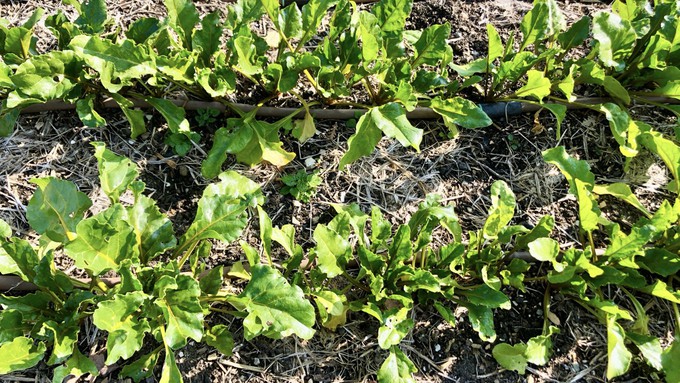
El Dorado County master gardeners offer free workshop on cool-season crops

Chard does well in the Sacramento region during the fall and winter. Learn about cold-weather vegetable growing this Saturday in Placerville. Kathy Morrison
Every season is veggie season in the greater Sacramento area. But how do you make the most of cooler weather to come?
Find out during a free in-person workshop, offered by the UC Master Gardeners of El Dorado County.
Set for 9 a.m. Saturday, Aug. 24, “Fall and Winter Veggies” will cover the basics of what to grow and how to grow it during our cooler months, October through March.
El Dorado County master gardener Zack Dowell will lead the three-hour class, to be held at the Placerville Public Library. Note: This is a new location for this workshop.
“Would you like to continue to harvest luscious, home-grown vegetables even after the heat of summer subsides?” say the master gardeners. “If so, now is the time to plant for a fall and winter harvest. Learn how to grow a successful winter vegetable garden from UC Master Gardener Zack Dowell.”
Among the vegetables that grow well during those cooler months are cole crops – cabbage, broccoli, kale, chard, cauliflower, Brussels sprouts, collards, etc. – as well as leafy greens, peas, fava beans, onions and more.
Although it seems counterintuitive, September and October -- while it's still warm -- is the best time to plant many of these crops.
Pre-registration is requested but not required. Register here: https://surveys.ucanr.edu/survey.cfm?surveynumber=42973
The Placerville Public Library is located at 345 Fair Lane, Placerville.
Details: https://mgeldorado.ucanr.edu/.
Comments
0 comments have been posted.Sacramento Digs Gardening to your inbox.
Food in My Back Yard Series
April 29: What's (already) wrong with my tomato plants?
April 22: Should you stock up on fertilizer? (Yes!)
April 15: Grow culinary herbs in containers
April 8: When to plant summer vegetables
April 1: Don't be fooled by these garden myths
March 25: Fertilizer tips: How to 'feed' your vegetables for healthy growth
March 18: Time to give vegetable seedlings some more space
March 11: Ways to win the fight against weeds
March 4: Potatoes from the garden
Feb. 25: Plant a fruit tree now -- for later
Feb. 18: How to squeeze more food into less space
Feb. 11: When to plant? Consider staggering your transplants
Feb. 4: Starting in seed starting
Sites We Like
Garden Checklist for week of May 4
Enjoy this spring weather – and get gardening!
* Plant, plant, plant! It’s prime planting season in the Sacramento area. Time to set out those tomato transplants along with peppers and eggplants. Pinch off any flowers on new transplants to make them concentrate on establishing roots instead of setting premature fruit.
* Direct-seed melons, cucumbers, summer squash, corn, radishes, pumpkins and annual herbs such as basil.
* Harvest cabbage, lettuce, peas and green onions.
* In the flower garden, direct-seed sunflowers, cosmos, salvia, zinnias, marigolds, celosia and asters. (You also can transplant seedlings for many of the same flowers.)
* Plant dahlia tubers. Other perennials to set out include verbena, coreopsis, coneflower and astilbe.
* Transplant petunias, marigolds and perennial flowers such as astilbe, columbine, coneflowers, coreopsis, dahlias, rudbeckia and verbena.
* Keep an eye out for slugs, snails, earwigs and aphids that want to dine on tender new growth.
* Feed summer bloomers with a balanced fertilizer.
* For continued bloom, cut off spent flowers on roses as well as other flowering plants.
* Add mulch to the garden to maintain moisture. Mulch also cuts down on weeds. But don’t let it mound around the stems or trunks of trees or shrubs. Leave about a 6-inch to 1-foot circle to avoid crown rot or other problems.